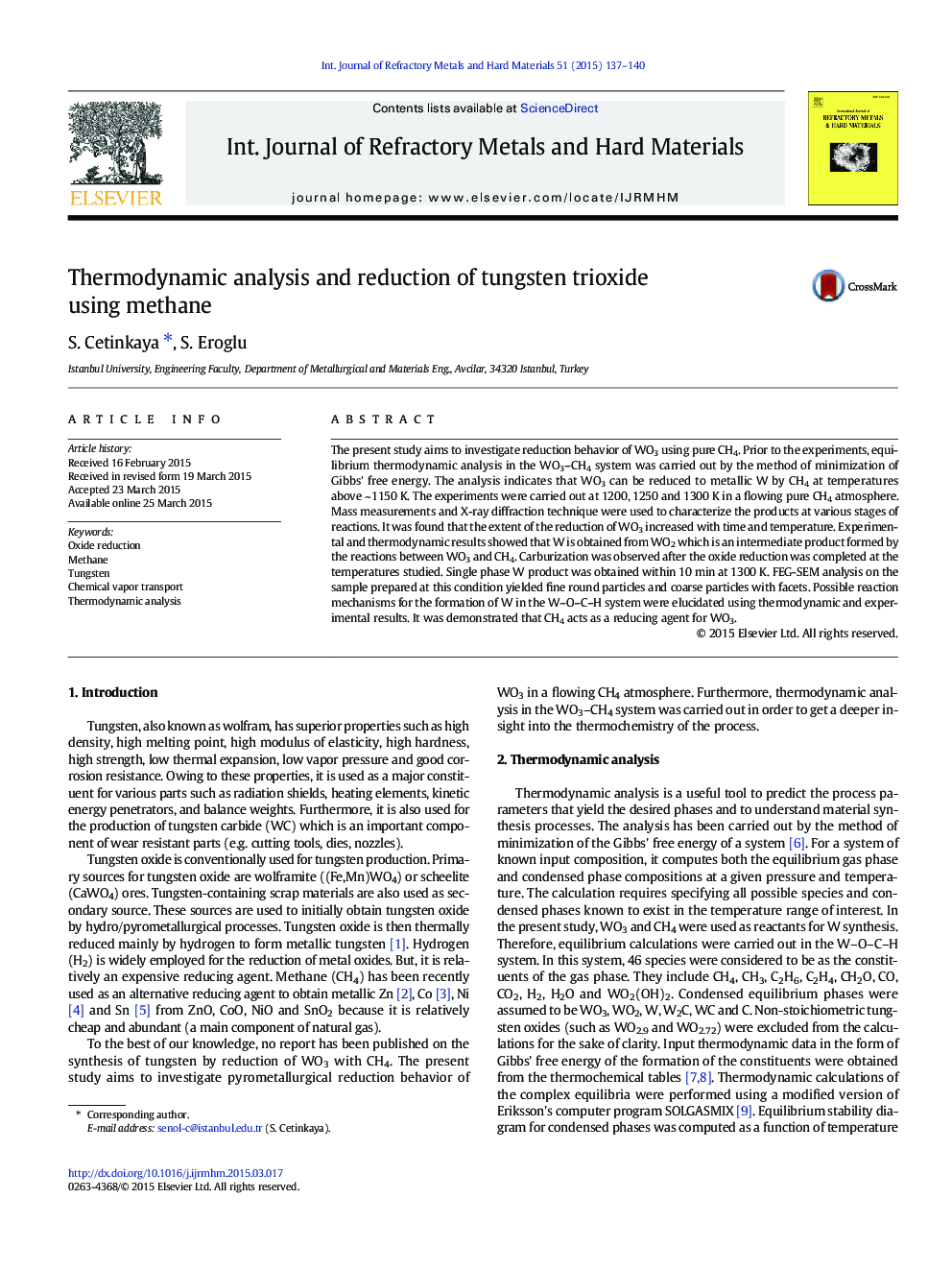| Article ID | Journal | Published Year | Pages | File Type |
|---|---|---|---|---|
| 1602946 | International Journal of Refractory Metals and Hard Materials | 2015 | 4 Pages |
•Extent of the reduction of WO3 by CH4 increased with reaction time and temperature.•Single phase W product was obtained within 10 min at 1300 K.•Equilibrium thermodynamic analysis predicted the reaction pathways from WO3 to W.•The reduction in the WO3–CH4 system follows the path of WO3 → WO2 → W.•WO3 can be reduced to W in a flowing undiluted CH4 atmosphere.
The present study aims to investigate reduction behavior of WO3 using pure CH4. Prior to the experiments, equilibrium thermodynamic analysis in the WO3–CH4 system was carried out by the method of minimization of Gibbs' free energy. The analysis indicates that WO3 can be reduced to metallic W by CH4 at temperatures above ~ 1150 K. The experiments were carried out at 1200, 1250 and 1300 K in a flowing pure CH4 atmosphere. Mass measurements and X-ray diffraction technique were used to characterize the products at various stages of reactions. It was found that the extent of the reduction of WO3 increased with time and temperature. Experimental and thermodynamic results showed that W is obtained from WO2 which is an intermediate product formed by the reactions between WO3 and CH4. Carburization was observed after the oxide reduction was completed at the temperatures studied. Single phase W product was obtained within 10 min at 1300 K. FEG-SEM analysis on the sample prepared at this condition yielded fine round particles and coarse particles with facets. Possible reaction mechanisms for the formation of W in the W–O–C–H system were elucidated using thermodynamic and experimental results. It was demonstrated that CH4 acts as a reducing agent for WO3.
